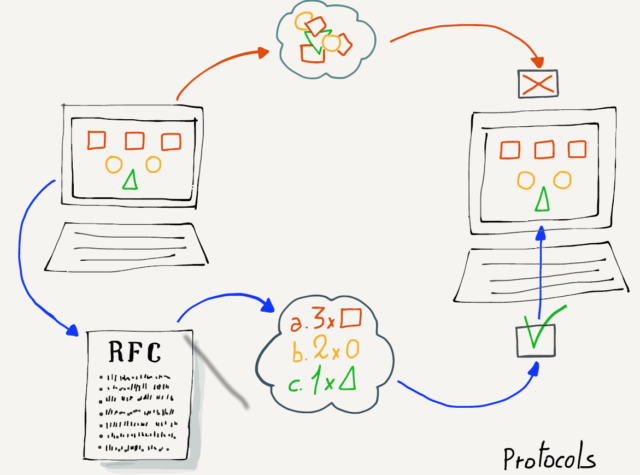Just like people talking on telephones, each pair of network applications needs a set of rules that govern the conversation. In most cultures, when your phone rings and you pick up the phone you say “Hello”. Normally the person who made the call (the client person) is silent until the person who picked up the phone (the server person) says “Hello”. If you have ever called someone who does not follow this simple rule, it can be quite confusing.
You probably would assume that the connection was not working, hang up, and retry the call.
A set of rules that govern how we communicate is called a “protocol”. The definition of the word protocol is “a rule which describes how an activity should be performed, especially in the field of diplomacy.” The idea is that in formal situations, we should behave according to a precise set of rules. We use this word to describe networked applications, because without precise rules, applications have no way to establish and manage a conversation. Computers like precision.
There are many different networked applications and it is important that each networked application have a well-documented protocol so that all servers and clients can interoperate. Some of these protocols are intricate and complex.
The protocol that describes how a web browser communicates with a web server is described in a number of large documents starting with this one:
https://tools.ietf.org/html/rfc7230
The formal name of the protocol between web clients and web servers is the “HyperText Transport Protocol”, or HTTP for short.
When you put “http:” or “https:” on the beginning of a URL that you type into the browser, you are indicating that you would like to retrieve a document using the HTTP protocol.
If you were to read the above document, and go to section 5.3.2 on page 41, you find the exact text of what a web client is supposed to send to a web server:

GET http://www.example.org/pub/WWW/TheProject.html HTTP/1.1 One of the reasons that HTTP is so successful is that it is relatively simple compared to most client/server protocols. Even though the basic use of HTTP is relatively simple, there is a lot of detail that allows web clients and servers communicate efficiently and transfer a wide range of information and data. Six different documents describe the HTTP protocol, in a total of 305 pages. That might seem like a lot of detail, but the key in designing protocols is to think through all possible uses of the protocol and describe each scenario carefully.